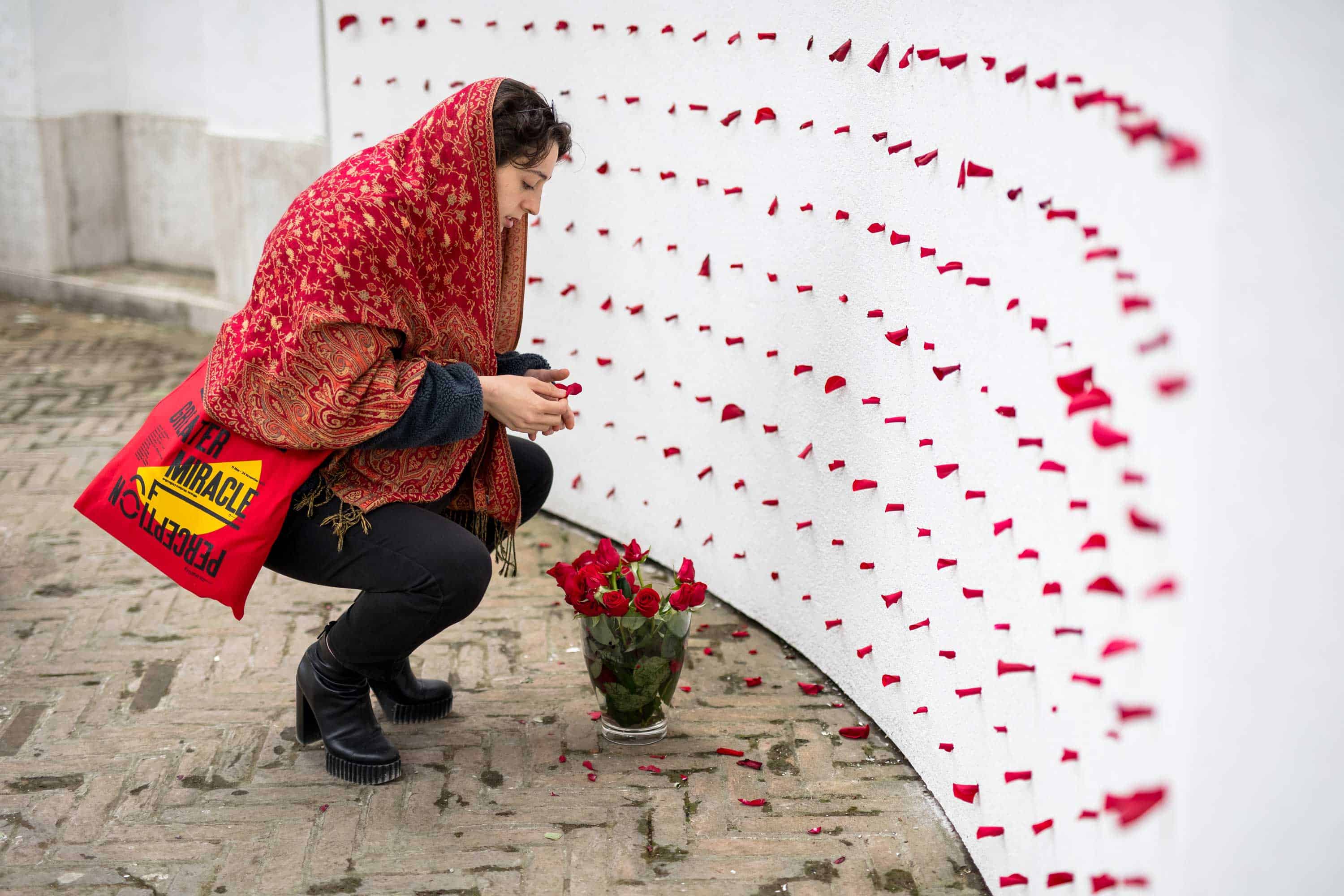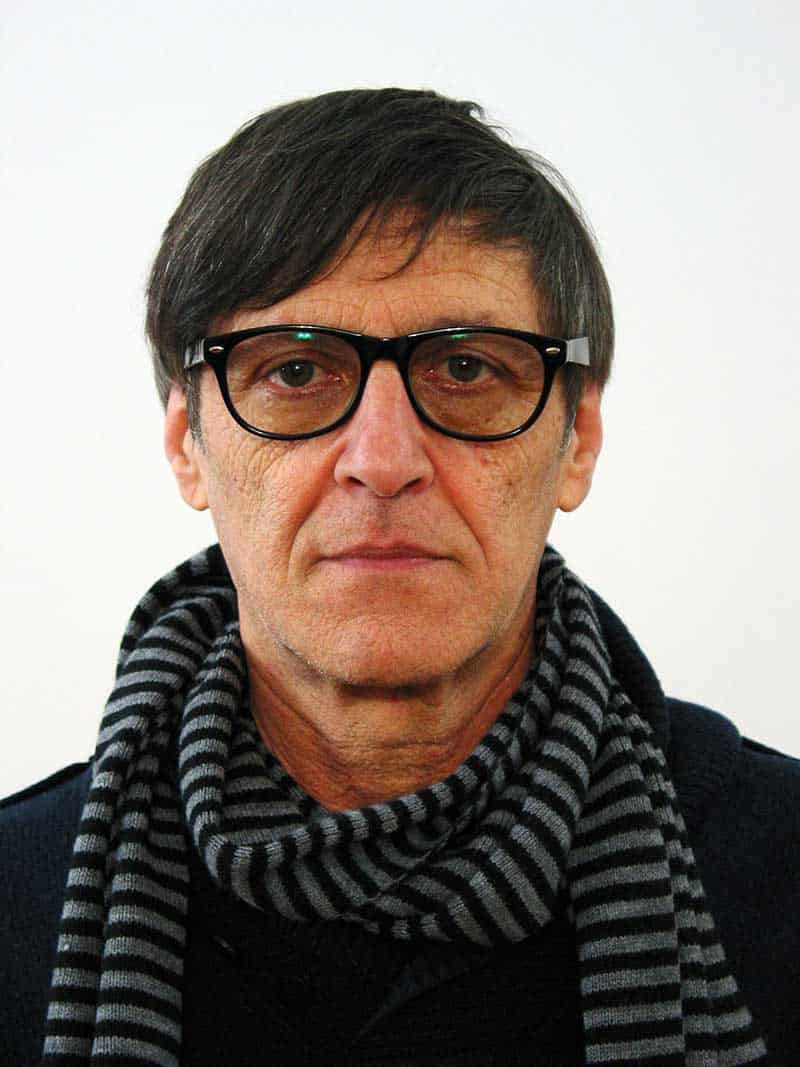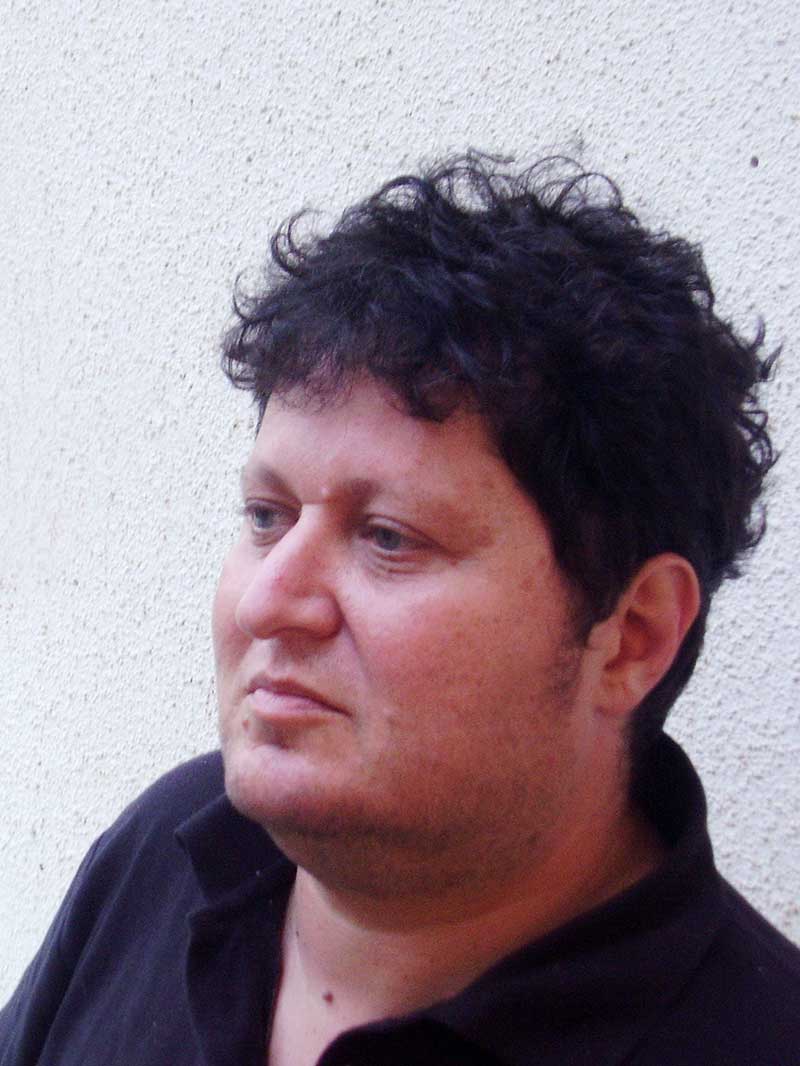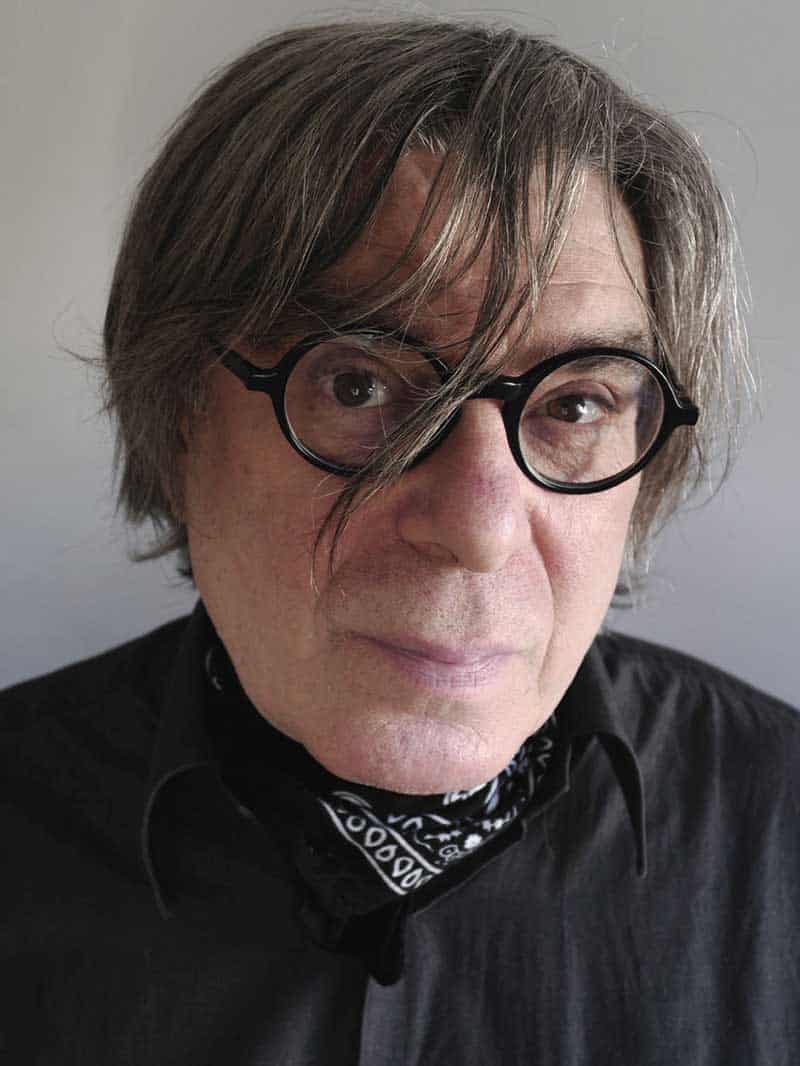Two years ago, during the 58th Venice Biennale, Romania was showing a retrospective exhibition of Geta Brătescu, its first solo in Venice, dedicated to a female artist. This year, Romania has prepared something different. I speak to Cristian Nae, who curated the Romanian Pavilion. An exhibition exploring the issues of the “presence of absence” and marginalization, on view in Giardini and at the New Gallery of the Romanian Institute for Culture and Humanistic Research.

Romanian Pavilion, Photo YAP studio Pavel Curagău
Maria Markiewicz: This year in Venice, Romania is showing works of three artists, Belu-Simion Făinaru, Dan Mihălțianu and Miklós Onucsán. What connects their work?
Cristian Nae: Their works in Venice are characterised by a specific ambivalence, they are at the same time commemorative and counter-monumental, serious and playful. They all question the idea of a “national construction”, in a period, when the anti-European discourse tended to prevail in the political discourse in Romania. For the current exhibition project, they explore the quite abstract topic of the “presence of absence”. More concretely, they explore different conditions of marginality, as well as political and existential issues, which are often related to utopian projections and forgotten historical moments, as well as the unaccomplished gestures of collective remembrance.
Miklós Onucsán
Belu-Simion Făinaru
Dan Mihălțianu
MM: Făinaru, Mihaltianu and Onucsán all belonged to the 1980s generation. Can you tell me what characterised it and why it was and still is important for Romanian contemporary art?
CN: There is no easy characterisation for that decade in Romania, except for the fact that cultural production became increasingly dominated by an authoritarian and highly ideologized aesthetic, infused with ethno-nationalism. There was no place left for artistic experiments and these artists had to invent their own micro-communities and do everything by themselves, in the most precarious decade of Romanian socialism after the 1950s. In the 1980s, these artists were isolated, and, to a certain extent, they were asynchronous with artistic discourses prevailing in Western Europe or the USA. So, the experimental art of the late 1960s and the 1970s in Romania became an acute existential engagement, a type of solipsism, feeding itself from the experience of the 1970s. Engagement with art was always a political stance, but never in a direct, explicit way. Some of the Romanian artists of these generation became important artists in the early 1990s, when their social engagement was in tune with the international art discourse. But it is symptomatic that these three artists remained, to a certain extent, asynchronous with global problems today, such as the climate change, biopolitics, regressive populism. What they exhibit in Venice is concerned mainly, and perhaps obsessively, with the place of art, of their own art, in the current world. This generation is also important because very few artists that started their careers in the 1980s attained international success. They are, in a way, still marginalized.

Romanian Pavilion, Photo YAP studio Pavel Curagău
MM: Installations shown in the Romanian Pavilion are from the past, but they were reconfigured and therefore became new art pieces. What is the message, that you as a curator, are trying to send through these works to the world?
CN: Contrary to all expectations, there is no unified message I was trying to send through these artworks. Rather, I was trying to offer a unique space for these singular, very different, almost incommensurable, art practices to coexist, because the only space where they can meet is the abstract discourse of art history. However, these artists’ works are absent from major international surveys and they also risk being excluded from the ones written in Romania. Hence, my insistence on the “weight of absence”. The artists reconfigured their artworks for the show at their own request. Then I realized that the history of these pieces is unique, they changed their meaning and even their appearance differs from the previous versions. So, somehow, I was interested to see to what extent can artworks write their own history, instead of becoming the passive subjects of art historical and critical discourse.
Romanian Pavilion, Photo YAP studio Pavel Curagău
Romanian Pavilion, Photo YAP studio Pavel Curagău
MM: Similarly to the 2017 Biennale, Romania shows its exhibition in two venues, first one being the Pavilion of Romania and second the New Gallery of the Romanian Institute of Culture and Humanistic Research. What viewers, who have not seen the Biennale yet, can expect to find in these two places?
CN: Initially, we wanted to exhibit in the New Gallery a documentation of these pieces to show their historical existence to the unaware public. Nevertheless, we have eventually decided to install complementary art pieces that should be read together in order to construct a full image of the art installations, since they are spilt between these spaces. This has become a major problem in reviewing the show. Most people focus only on what can be seen in the Pavilion in Giardini. A wall, where people can insert rose petals on the façade, complementing a claustrophobic memorial room featuring a bed on some washing machines, an egg, a library, a lightbulb and a chair, improperly installed in the hallway; a monumental pond on the floor filled with coins, and a wallpapered interior which is staging a restoration with material usually employed for outdoor construction sites. But these art pieces are also processual and participatory. They function in conjunction with their counterparts in the New Gallery, a vault which displays the public money collected in the Pavilion during the exhibition and distils a part of this capital in order to produce a limited edition of alcoholic beverage created in collaboration with the public. Another improperly installed room where the public plays a part of a temporary inhabitant, of a guest. Thus, the artworks raise issues of hospitality, of social cohesion, of geopolitical cosmopolitanism in the unlikely event of an erasure of geographical borders.

Romanian Pavilion, Photo YAP studio Pavel Curagău
MM: Belu-Simion Fainaru, Dan Mihălțianu and Miklós Onucsán all endured the communist era. Onucsán is of Hungarian origin, Făinaru and Mihaltianu both have an experience of emigration and living abroad. Is the sense of mobility and dynamic important for this year’s exhibition at the Romanian Pavilion?
CN: It is, although it can be experienced only indirectly. Făinaru is staging a derelict, claustrophobic room, commemorating his own experiences of exile during the 1970s, and he also recalls the Jewish history of the Holocaust. It may seem strange, but Romania also had a Pogrom, and the remaining Jews were sold to Israel during socialism. For Mihălțianu, it has to do with this idea of a transnational community where solidarity may replace monetarized social transactions. For Onucsán, it is suggested by the very idea of a camouflage.
MM: The installations shown in Unfinished Conversations on the Weight of Absence are presented as responses to most current political problems of today’s world, such as populism and nationalism. Although the works were made in the 1980s and 1990s, your exhibition shows that they didn’t lose their power or relevancy?
CN: Miklos Onucsán’s work was constructed in response to his desire to be present in exhibitions during the 1990s, while at the same time, exhibiting no definite image. This time, he responds to the expectancy to show something for or in the name of Romania. There is no national representation to be found here. For Mihălțianu, the commemoration of forced labour during socialism became the inquiry into the current condition of art as a mere commodity. For Făinaru, the topic of migration was always a favourite one, and it always remains actual, although the language he employs is a very particular one, filled with contradictions. It is also rooted in Jewish history and situated on the thin line between Jewish nationalism and neo-fascism. Is he serious in the way he relates to the “holy land”? How can spirituality and secularism be reconciled today? Why does he use an aesthetic of the “poor image”, a rough type of animation, in his more recent interactive art pieces?

Romanian Pavilion, Photo YAP studio Pavel Curagău
MM: The works on view in the Romanian Pavilion evoke notions of displacement and migration, reflect on democracy and even the Venice Biennale itself. Do you perceive the Biennial as a place to show art that comments on or criticizes the current political situation? Is Venice a good place to start a discussion about today’s most urgent issues, through art?
CN: It should be, since it otherwise remains a masked art fair. Many other National Pavilions connect to current political situation this year. Some tackled nationalism under the pressure of migration. Holland, for instance, Switzerland, as well. Or that of colonial histories, like Chile. Or attempted to respond to neo-fascist politics in Brazil, or to political abuses (Israel). Others indirectly considered social and political issues. For instance, Brexit and the lives of poor British families in the British Pavilion. But this year, politics was certainly taken over by planetary concerns. Some artists brilliantly responded to the need of ecological awareness and the indifference or even bourgeois hypocrisy related to it, like in the Lithuanian Pavilion, or in Finland and in the Nordic Countries Pavilion. This year, apocalyptic scenarios and the dire consequences of the Anthropocene were perhaps more pressing topics to take into account.

Romanian Pavilion, Photo YAP studio Pavel Curagău












